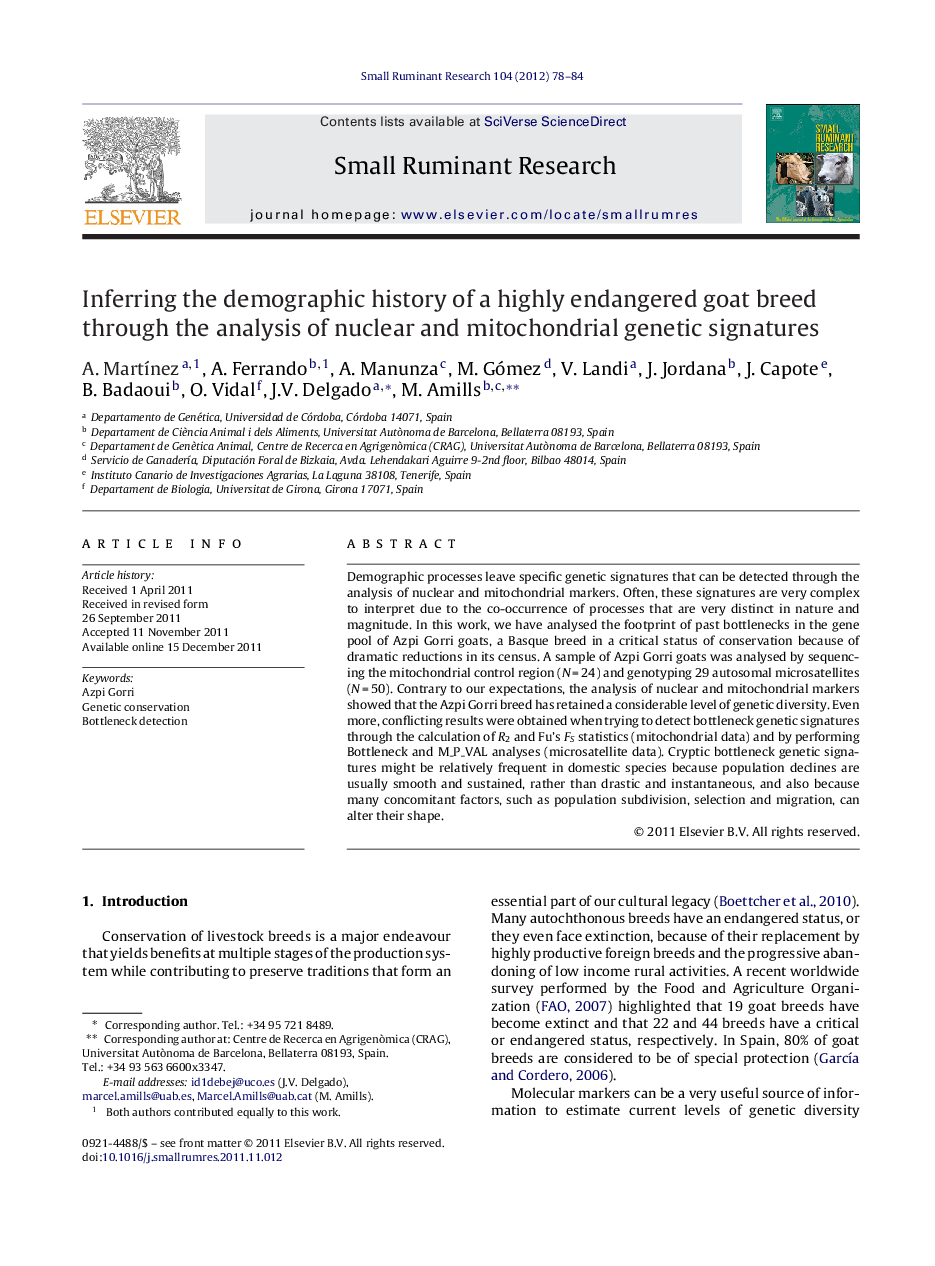| Article ID | Journal | Published Year | Pages | File Type |
|---|---|---|---|---|
| 2457226 | Small Ruminant Research | 2012 | 7 Pages |
Demographic processes leave specific genetic signatures that can be detected through the analysis of nuclear and mitochondrial markers. Often, these signatures are very complex to interpret due to the co-occurrence of processes that are very distinct in nature and magnitude. In this work, we have analysed the footprint of past bottlenecks in the gene pool of Azpi Gorri goats, a Basque breed in a critical status of conservation because of dramatic reductions in its census. A sample of Azpi Gorri goats was analysed by sequencing the mitochondrial control region (N = 24) and genotyping 29 autosomal microsatellites (N = 50). Contrary to our expectations, the analysis of nuclear and mitochondrial markers showed that the Azpi Gorri breed has retained a considerable level of genetic diversity. Even more, conflicting results were obtained when trying to detect bottleneck genetic signatures through the calculation of R2 and Fu's FS statistics (mitochondrial data) and by performing Bottleneck and M_P_VAL analyses (microsatellite data). Cryptic bottleneck genetic signatures might be relatively frequent in domestic species because population declines are usually smooth and sustained, rather than drastic and instantaneous, and also because many concomitant factors, such as population subdivision, selection and migration, can alter their shape.
